Nissan Qashqai vs Volvo XC90 – Performance, range & efficiency compared
Everyday use, family trips or long-distance drives – here’s where the differences show.
Discover whether Nissan Qashqai or Volvo XC90 fits your lifestyle better.
Costs and Efficiency:
Price and efficiency are often the first things buyers look at. Here it becomes clear which model has the long-term edge – whether at the pump, the plug, or in purchase price.
Nissan Qashqai has a clearly advantage in terms of price – it starts at 29400 £, while the Volvo XC90 costs 69800 £. That’s a price difference of around 40371 £.
Fuel consumption also shows a difference: Volvo XC90 manages with 3.50 L and is therefore clearly more efficient than the Nissan Qashqai with 5.10 L. The difference is about 1.60 L per 100 km.
Engine and Performance:
Power, torque and acceleration say a lot about how a car feels on the road. This is where you see which model delivers more driving dynamics.
When it comes to engine power, the Volvo XC90 has a convincingly edge – offering 455 HP compared to 190 HP. That’s roughly 265 HP more horsepower.
In acceleration from 0 to 100 km/h, the Volvo XC90 is clearly quicker – completing the sprint in 5.40 s, while the Nissan Qashqai takes 7.90 s. That’s about 2.50 s faster.
In terms of top speed, the Nissan Qashqai performs a bit better – reaching 206 km/h, while the Volvo XC90 tops out at 180 km/h. The difference is around 26 km/h.
There’s also a difference in torque: Volvo XC90 pulls convincingly stronger with 709 Nm compared to 330 Nm. That’s about 379 Nm difference.
Space and Everyday Use:
Beyond pure performance, interior space and usability matter most in daily life. This is where you see which car is more practical and versatile.
Seats: Volvo XC90 offers evident more seating capacity – 7 vs 5.
In curb weight, Nissan Qashqai is significantly lighter – 1420 kg compared to 2080 kg. The difference is around 660 kg.
In terms of boot space, the Nissan Qashqai offers significantly more room – 504 L compared to 302 L. That’s a difference of about 202 L.
In maximum load capacity, the Volvo XC90 performs distinct better – up to 1856 L, which is about 409 L more than the Nissan Qashqai.
When it comes to payload, Volvo XC90 distinct takes the win – 710 kg compared to 520 kg. That’s a difference of about 190 kg.
Who wins the race?
The Volvo XC90 proves to be wins the duel decisively and therefore becomes our DriveDuel Champion!
Volvo XC90 is the better all-rounder in this comparison.
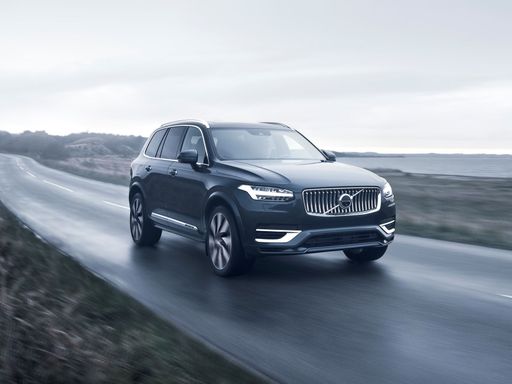
Volvo XC90
Nissan Qashqai
The Nissan Qashqai stands out in the compact SUV market with its sleek design and versatile features. Its smooth ride and refined interior make it a popular choice for both city driving and weekend adventures. Advanced safety technologies and user-friendly infotainment add to its appeal, ensuring a comfortable and secure driving experience for all passengers.
details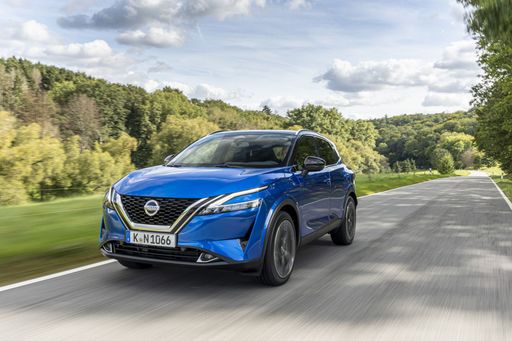 @ Nissan
@ Nissan
 @ Nissan
@ Nissan
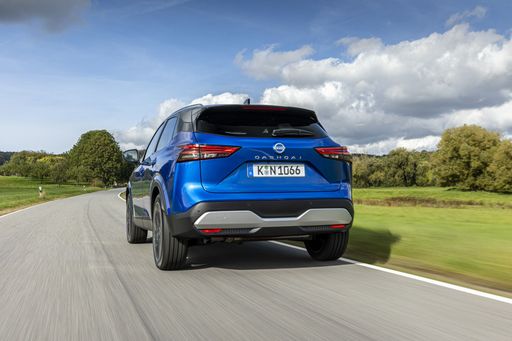 @ Nissan
@ Nissan
 @ Nissan
@ Nissan
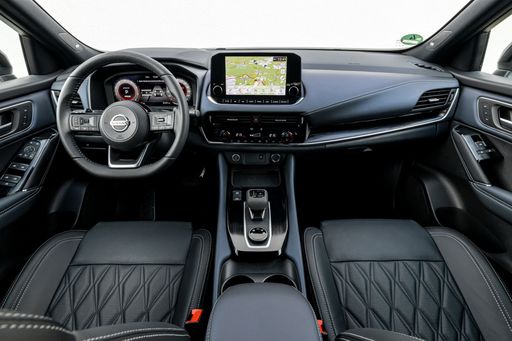 @ Nissan
@ Nissan
Volvo XC90
The Volvo XC90 stands out with its elegant Scandinavian design, seamlessly blending luxury with versatility. Inside, it offers a spacious and meticulously crafted interior, showcasing high-quality materials and advanced technology. The vehicle provides a comfortable and smooth driving experience, making it a popular choice for families and long journeys.
details @ media.volvocars.com
@ media.volvocars.com
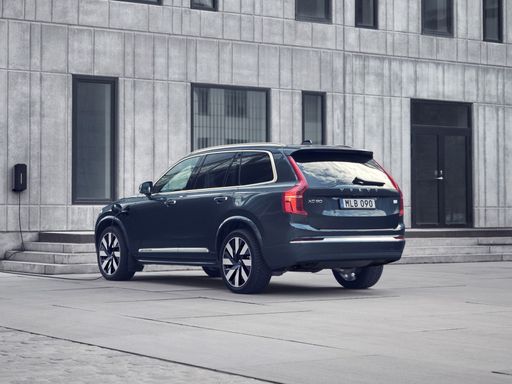 @ media.volvocars.com
@ media.volvocars.com
 @ media.volvocars.com
@ media.volvocars.com
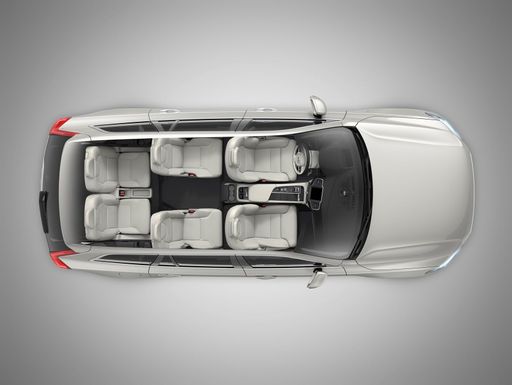 @ media.volvocars.com
@ media.volvocars.com
 @ media.volvocars.com
@ media.volvocars.com

|

|
|
|
|
Costs and Consumption |
|
|---|---|
|
Price
29400 - 42500 £
|
Price
69800 - 84600 £
|
|
Consumption L/100km
5.1 - 6.8 L
|
Consumption L/100km
3.5 - 8.5 L
|
|
Consumption kWh/100km
-
|
Consumption kWh/100km
-
|
|
Electric Range
-
|
Electric Range
71 km
|
|
Battery Capacity
-
|
Battery Capacity
14.70 kWh
|
|
co2
116 - 154 g/km
|
co2
79 - 191 g/km
|
|
Fuel tank capacity
55 L
|
Fuel tank capacity
71 L
|
Dimensions and Body |
|
|---|---|
|
Body Type
SUV
|
Body Type
SUV
|
|
Seats
5
|
Seats
7
|
|
Doors
5
|
Doors
5
|
|
Curb weight
1420 - 1665 kg
|
Curb weight
2080 - 2297 kg
|
|
Trunk capacity
479 - 504 L
|
Trunk capacity
262 - 302 L
|
|
Length
4425 mm
|
Length
4953 mm
|
|
Width
1835 mm
|
Width
1923 mm
|
|
Height
1625 mm
|
Height
1771 mm
|
|
Max trunk capacity
1422 - 1447 L
|
Max trunk capacity
1816 - 1856 L
|
|
Payload
466 - 520 kg
|
Payload
653 - 710 kg
|
Engine and Performance |
|
|---|---|
|
Engine Type
Petrol MHEV, Full Hybrid
|
Engine Type
Petrol MHEV, Plugin Hybrid
|
|
Transmission
Manuel, Automatic
|
Transmission
Automatic
|
|
Transmission Detail
Manual Gearbox, CVT, Reduction Gearbox
|
Transmission Detail
Automatic Gearbox
|
|
Drive Type
Front-Wheel Drive, All-Wheel Drive
|
Drive Type
All-Wheel Drive
|
|
Power HP
140 - 190 HP
|
Power HP
250 - 455 HP
|
|
Acceleration 0-100km/h
7.9 - 10.2 s
|
Acceleration 0-100km/h
5.4 - 7.7 s
|
|
Max Speed
170 - 206 km/h
|
Max Speed
180 km/h
|
|
Torque
240 - 330 Nm
|
Torque
360 - 709 Nm
|
|
Number of Cylinders
3 - 4
|
Number of Cylinders
4
|
|
Power kW
103 - 140 kW
|
Power kW
184 - 335 kW
|
|
Engine capacity
1332 - 1497 cm3
|
Engine capacity
1969 cm3
|
General |
|
|---|---|
|
Model Year
2024
|
Model Year
2024 - 2025
|
|
CO2 Efficiency Class
E, D
|
CO2 Efficiency Class
G, B
|
|
Brand
Nissan
|
Brand
Volvo
|
Is the Nissan Qashqai offered with different drivetrains?
Available configurations include Front-Wheel Drive or All-Wheel Drive.
The prices and data displayed are estimates based on German list prices and may vary by country. This information is not legally binding.
